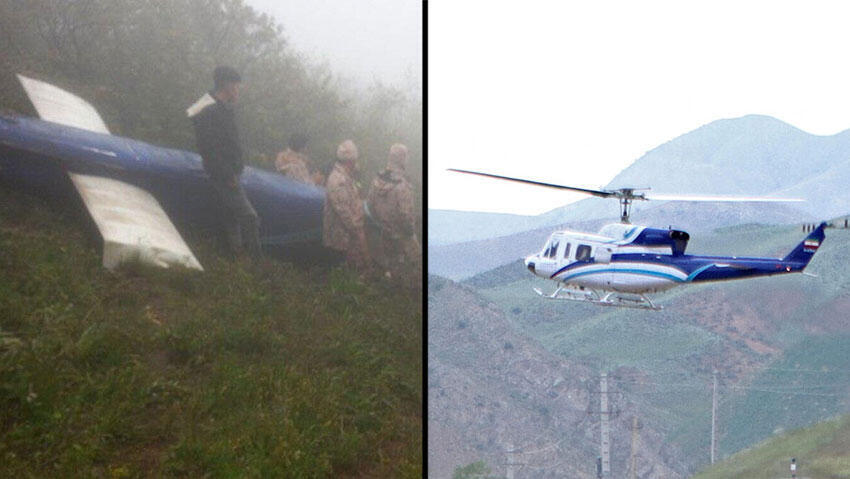Tehran blames US sanctions withholding air fleet parts for Raisi crash

The helicopter that carried Ebrahim Raisi
(Photo: Ali Hamed/ Reuters)
Despite Iran’s extensive drone fleet, the country faces American and international sanctions that hinder the development of a modern fleet of planes and helicopters. Much of the Iranian Air Force relies on aircraft from before the 1979 Islamic Revolution, and in recent years there have been numerous reports about Iran’s difficulties in obtaining spare parts for these aging aircraft.
Military expert Cedric Leighton told CNN that the helicopter involved in the crash might have been purchased before the Islamic Revolution, though Iranian authorities have not confirmed this. Contrary to this claim, FlightGlobal reports the average age of Bell 212 helicopters is 30.9 years, suggesting the helicopter could have been acquired after the revolution.
The Bell 212, originally developed by Bell in the 1960s as a military helicopter for the U.S. and Canada, has two engines, allowing it to carry more weight than the single-engine model it was based on. Its civilian version is still used today by many countries and private companies for medical evacuations, law enforcement, and firefighting.
In the late 1970s, during the final years of his rule, the Iranian Shah, a close ally of the U.S., purchased many American-made military aircraft and helicopters, including Bell helicopters. The model that crashed had previously served the Iranian Air Force and was converted for passenger transport.
Leighton noted that even if Raisi’s helicopter wasn’t one of the pre-revolutionary models, Iran’s difficulty in obtaining spare parts, combined with severe weather conditions, likely contributed to the crash. “All these factors, I believe, led to a series of incidents and decisions by the pilot, and perhaps the president himself, during the flight. Unfortunately, it ended in a crash,” he told CNN.
